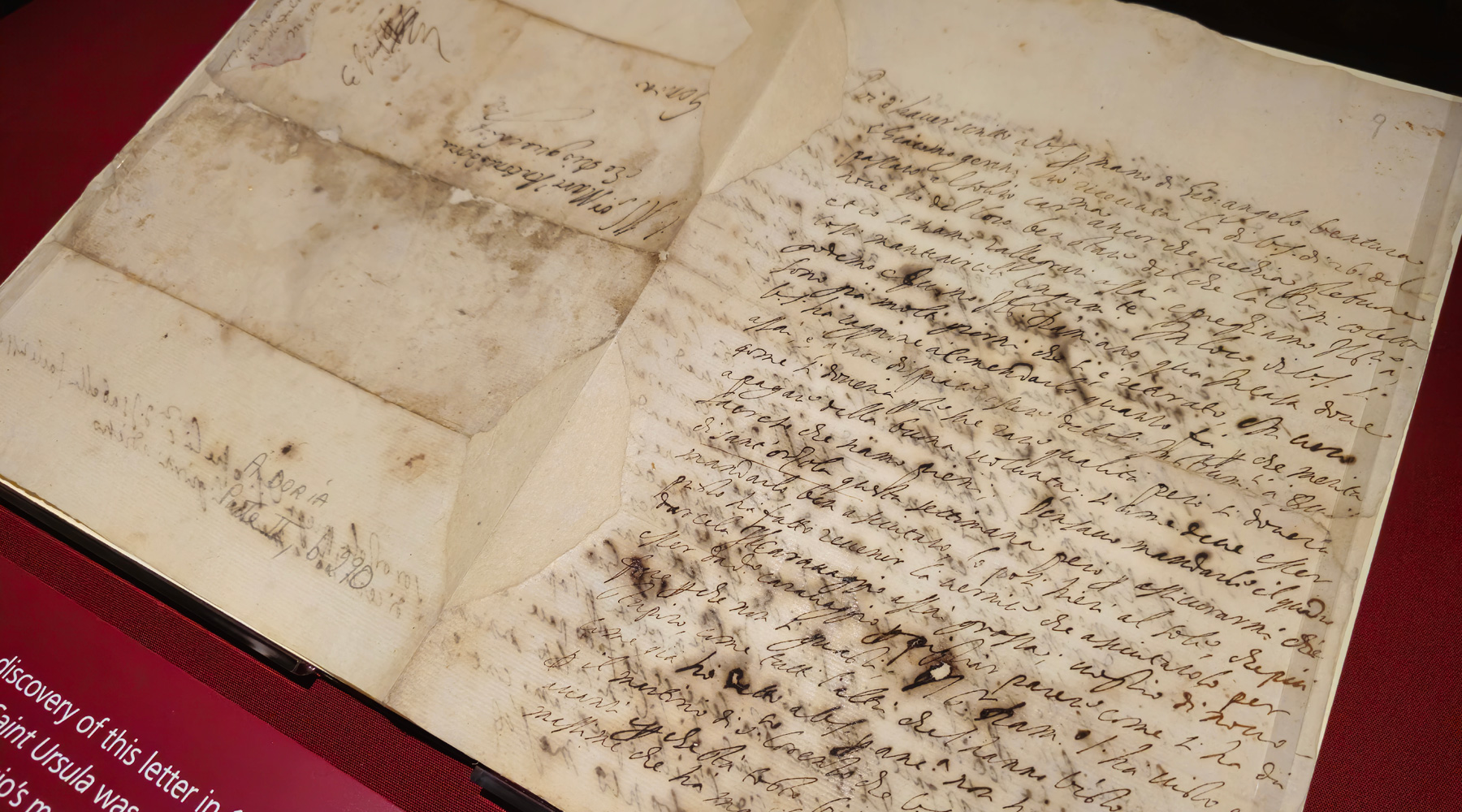A dark, brooding painting dominates a dark room in the National Gallery at the moment, sitting next to the fragile document that only recently confirmed that this is indeed the last painting by the brilliant but flawed artist Caravaggio.
This depiction of the Martyrdom of Saint Ursula – she of 11,000 virgins – was commissioned by one of Caravaggio’s patrons while the artist was still on the run after he had been convicted of murder. Being a murderer wasn’t enough to stop people wanting his paintings.
At the time, Caravaggio was in a hurry – a Papal Pardon was being talked about and he needed to complete the painting so he could hurry back to Rome – so much so that there’s a record of the painting being left out in the sun to help it dry quicker.
It was to be his last painting though, as he was returning from exile when he died, possibly of fever or maybe murdered in revenge himself
The painting passed through family owners until 1972 when the Banca Commerciale Italiana bought it. However, it was only seen as a modest masterpiece showing the Martyrdom of Saint Ursula by an unknown artist.
The family would have soon regretted selling it, as just a few years later, archivists discovered a letter that confirmed that there was a painting by Caravaggio of the martyrdom. There were sufficient inventories over the centuries of the family owners to confirm that this was indeed it—having, at some point in the deep past, been cut down in size and losing the name from the edge.
The painting bought for just £3,5000 just a few years earlier was now priceless.
Conservation of this now exceptionally valuable painting in 2003-4 also uncovered Caravaggio and his patron’s names on the back of the canvas, which had probably not seen daylight since the paint was still wet.
For the next few months, both the painting and that crucial letter are being displayed at the National Gallery in London.
The painting is dark in both story and style, with lots of dark backgrounds and shadows. However, up front, the future and saintly painted Saint Ursula is being murdered by an arrow fired at her by the Hun to one side.
The painting is unusual, for the time it was made, in showing the saint and her martyrdom as the central focus up close, as most paintings before had focused on her entourage of the 11,000 virgins who accompanied her to Rome and back before they were all slain by the Huns.
The entire scene is imbued with a complex interplay of light and shadow or chiaroscuro, characteristic of Caravaggio’s paintings. The viewer is faced with an intricate depiction of hands: the guilty hands that have just shot the arrow, Ursula’s hands framing the fatal wound in her chest, and the bystander’s hand, thrust between the two protagonists just moments too late.
If you look closely, you can just about make out that the background shows the shadows of fabrics, suggesting the scene was in the Hun’s battlefield tent. Look up, and you can see Caravaggio himself in the background behind the saint, a self-portrait he was ego-centric enough to include in a number of his works.
It’s a dramatic scene of a murder — and painted by a murderer.
The Last Caravaggio is at the National Gallery until 21st July 2024 and is free to visit — it’s in Room 46, which is next to the portico entrance.










Leave a Reply